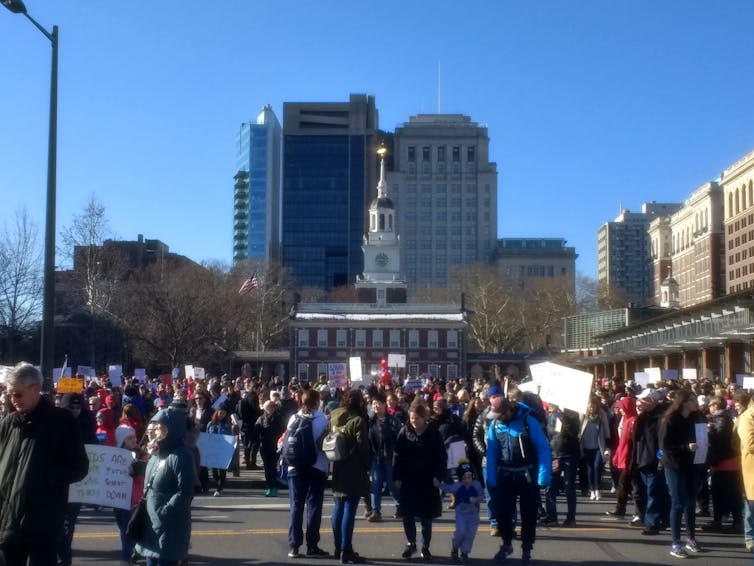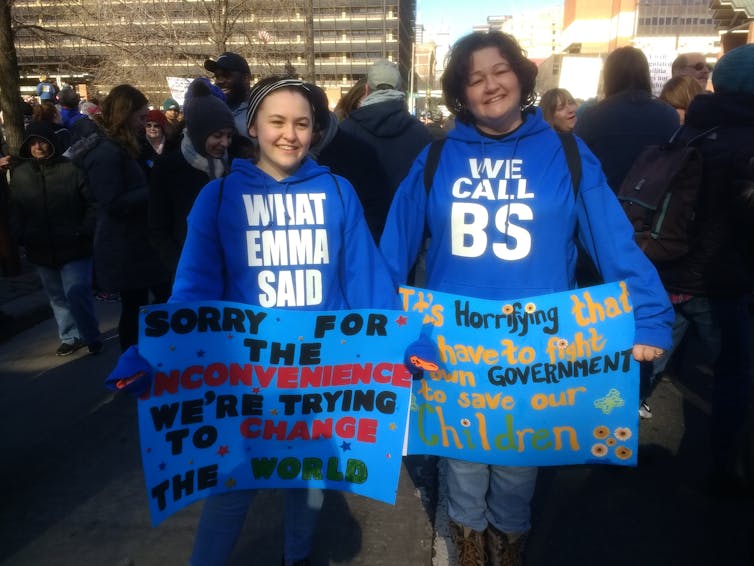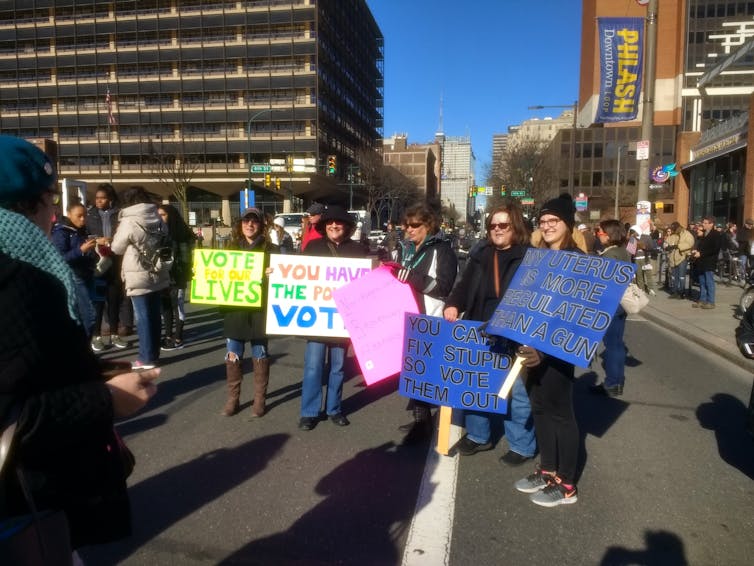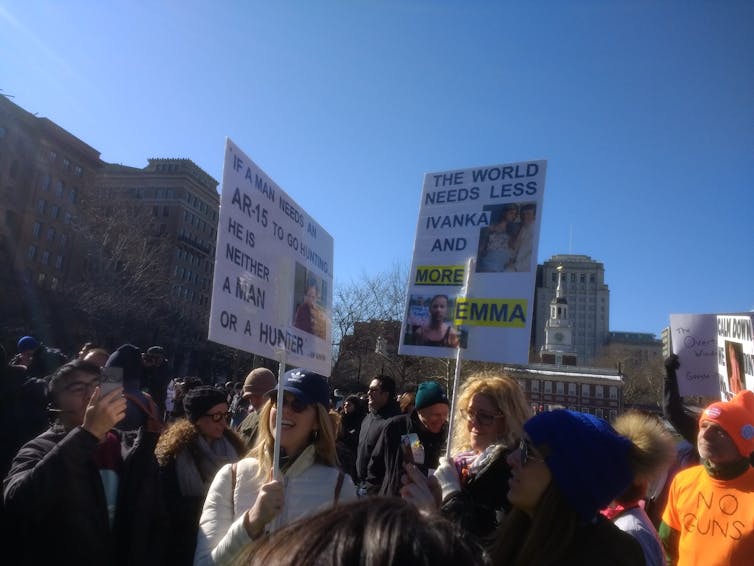March for Our Lives
Comment: March for Our Lives, about more than students and gun control
Published on: 26 March 2018
Writing for The Conversation, Dr Jon Coburn discusses how the March for Our Lives suggests that a far more significant movement for democratic change is taking root.

On a cool, sunny Saturday morning in Philadelphia, I watched as an estimated 20,000 people joined hundreds of thousands more across the US to march for their lives. Responding to February’s mass shooting at Marjory Stoneman Douglas High School in Parkland, Florida, participants called for an end to the stubborn political and cultural impasse that has frustrated all attempts at gun reform. But March for Our Lives suggests that a far more significant movement for democratic change is taking root.
After the Sandy Hook Elementary School massacre in 2012, public policy scholar Kristin A. Goss wrote about the curious absence of a “popular movement for gun control”. The failure of measures to prevent future slayings in the event’s aftermath paralysed many Americans: if the killing of 20 elementary school children could not move policymakers to act, then nothing could. Things are different now. The Philadelphia march alone should force a long-delayed conversation about the city’s gun crime, and will hopefully pressure lawmakers to do something meaningful about it.
Philadelphia has so far been spared the horror of a mass school shooting, but the city is nevertheless blighted by gun violence. There were reportedly 335 gun deaths in 2017. Statistics show that since 2006, more than 14,500 people have been shot in Philadelphia. Shira Goodman, executive director of CeasefirePA and currently running for Congress, said at the march that while mass shootings may galvanise people, Philadelphia suffers from a daily problem of violence that remains overlooked.

The timing of the march could not have been better: it coincided with both an annual gun show in nearby Oaks and a Guardian report that a rural Pennsylvania school district would begin arming teachers and students with buckets of rocks, to be kept locked in a classroom closet in the event of an armed assailant breaking in.
Fitting then that March for Our Lives foregrounded the perspectives of students themselves. To be sure, the diligent work of youth leaders ensured the international success of Saturday’s marches. Assembled outside Independence Hall on the morning were children of all ages, armed with placards, hoodies, and chants asserting the hypocrisy and inadequacies of current gun laws. It was heartening to see politically engaged young people speak so eloquently and passionately about the issues affecting their lives.
And yet, something deeper is happening – and the marchers assembled outside Independence Hall made for a remarkably broad church.
American responsibility
Among the marchers were members of all sorts of groups – Moms Demand Action for Common Sense Gun Control, Everytown for Gun Safety, Black Lives Matter, and the Conscious Elders Network. Veterans of last year’s Women’s Marches proudly donned their pussyhats. Many more took to the streets for the first time, pushed to action by the seriousness of the cause.

And there is little to indicate that gun reform will be enough. The spectre of Donald Trump and all that the current presidency represents loomed over Philadelphia’s march. Marchers Carole and Craig, who have demonstrated since the 1960s, told me they were seizing an opportunity to help galvanise a wider movement for the democratic change they feel the country has needed for some time. Addressing the crowd, Pennsylvania Representative Brian Sims passionately linked gun culture to racism and gender and sexual discrimination. And marked out by their fluorescent vests and clipboards, countless volunteers implored people to register to vote in the upcoming midterm elections and effect broader electoral change.
Many marchers were clearly there to demand a much broader national conversation. Not everyone agreed on the need for extensive gun reform. Pennsylvania is a culturally diverse state, including not just the metropolis of Philadelphia and industrial heartlands but rural areas where hunting is still a way of life.
I met one marcher who grew up around guns and wants to see a ban on the notorious AR-15 semiautomatic rifle, but who also prefers the norm of responsible gun ownership to the prospect of a blanket ban of all firearms. Another person I spoke with reflected on the need for people to engage in frank political discussions with their neighbours.

The current uproar about school safety and gun control is part of a deeper American reckoning over personal responsibility and recklessness. Mark Timpone, parent of a student in Parkland, told marchers about his decision to give up his own AR-15. The power of his story came from his candid explanation of how he obtained the gun in the first place – how he knowingly exploited loopholes and deliberately sought out an unlicensed vendor at a gun show to get hold of it faster. His frank honesty quietened the assembled crowd.
As with all mass protest movements, whether and how March for Our Lives can translate its momentum into tangible legislative change remains to be seen. By drawing 800,000 demonstrators to the US capital and countless thousands to “sibling marches” around the world, this campaign is already shaping public debate – but gun control measures are only one front in this struggle.
Jon Coburn, Teaching Fellow in History, Newcastle University
This article was originally published on The Conversation. Read the original article.



